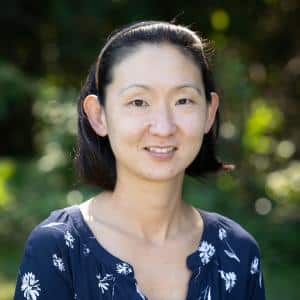As we finish up week six of our offsite learning program, I am amazed at how much has changed since mid-March. As educators learn more about teaching and learning offsite, we continue to grow and refine our online teaching practice. The list of skills and competencies teachers need to quickly acquire while simultaneously teaching online is long. You would think that learning new teaching systems and methodologies would be the most difficult aspect of teaching right now. However, when I ask teachers what is the most difficult thing they are dealing with right now, teachers will all say they miss their students.
Being with their students, in the schoolhouse or in the barn is what brings them joy and makes our faculty’s work meaningful and rewarding. They miss seeing the “a-ha” moments, the partnerships and friendships, the occasional frustration that leads to comprehension. They even miss seeing the teachable moments that come from poor choices that can ultimately lead to understanding, empathy, remorse, and a commitment to try better. Content acquisition, skill practice and mastery, and concept application can be accomplished through videos, worksheets, computer programs, and independent work. But the backdrop to all of this is a community of learners. More than ever we are seeing that the power of school is the social context it provides for learning.
Over and over again, I hear parents lament that their children miss the BDS community. For children, especially young children, community equals care, support, fun, companionship, togetherness. They are surrounded by friends and classmates. There is a sense of camaraderie when all of your peers are doing similar tasks at the same time and in the same space. This common experience is what builds your sense of community. This is what bonds a class together.
Regardless of the fact we are all sharing a common life event, our individual situations and physical separateness are an immense challenge to realizing a meaningful shared experience. This physical distancing is creating a social distancing, an isolation that is the antithesis of community. We try to overcome this void with technology. Video conferencing allows us to hear and see one another. However, as we learn more about Zoom fatigue we realize the great shortcomings of technology. We can feel the burden of trying to connect while distant.
It is vital to keep in mindas I tell myself repeatedlywhat we are tasked with is not to replicate the school community we had. Instead, we have had to create what a community is while physically apart. How do we take our knowledge of child development and education and everything we know about each individual child and re-apply it to a new context? How do we recreate moments of connection? That is a moving target, that like all teaching takes cautious and informed leaps of innovation and experimentation. Some teachers have used unstructured Zoom meetings as an open space to connect, like a lunch bunch or free choice time or even recess. Teachers have offered times to check-in individually with children, making sure that each student feels seen and heard. Some teachers have used assignments to bring student voices and experiences to the forefront. Others have used traditional class routines like Morning Meeting as a familiar platform to see and hear one another. Both written and video journals have also given children ways to connect with adults and peers. A journal can serve as a witness and give children a place to give their testimony and account of these times and feelings. Sharing these accounts give children opportunities to connect and see the common links in experiences.
We continue to look for innovative ways to stay connected. We are all eager to be together again. I miss all the small moments that I took for granted. Parents waving and saying I love you to their children at drop off. Children spontaneously giving hugs to each other. Lunch conversations that led to laughter. And the tradition I am most looking forward to returning to: welcoming students to the Barn on Tuesday mornings with a handshake and a smile. For now, it’s just a big smile and wave from my screen to yours.

